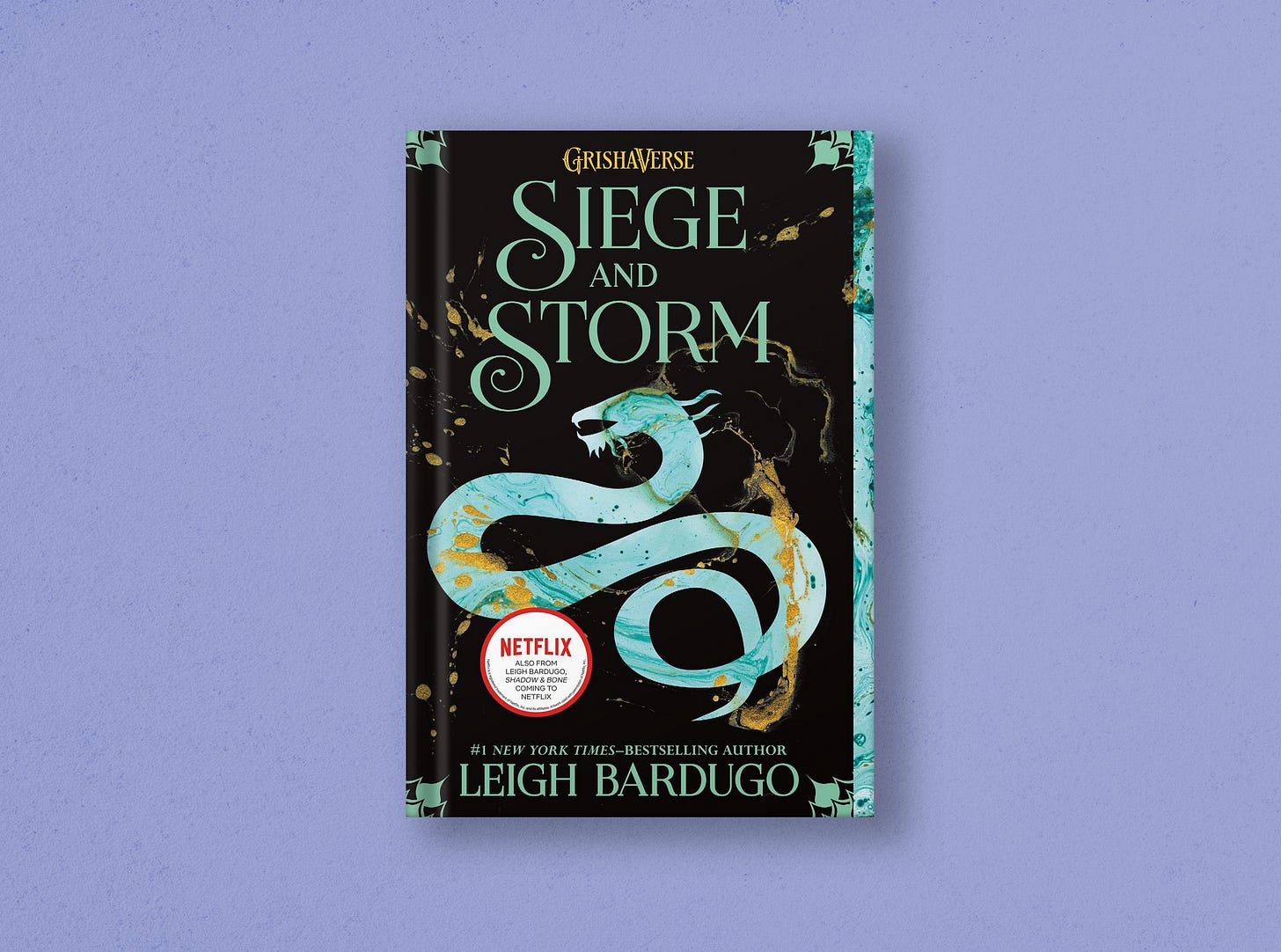Siege and Storm
Written by Leigh Bardugo.
🚨 WARNING: Possible Spoilers Ahead
🏔What is it about?
Seige and Storm begins with a whirlwind of action. Alina and Mal have escaped Ravka, journeyed across the sea to the country of Novyi Zem, and are slowly building up the funds needed to travel further West. One night, when they return home from a long day of work, they find the Darkling waiting for them. Not only has he survived his defeat from the battle in the Fold, but he has somehow become impossibly stronger. Just as Alina first discovered her power, the desperate circumstances of the Fold and swarming Volcra awakened a new depth to the Darkling's abilities. He is no longer limited to the creation and manipulation of darkness. Now, accessing some untold ancient force, the Darkling is capable of spawning life itself from the shadows.
Nichevo'ya, a kind of semi-solid shadow creature, are produced by the Darkling at a rapid pace and seemingly without limit. Although Alina is able to kill one using her light, there are too many to handle and Mal's mortal attacks do little to slow them down.
The pair are captured and whisked back to sea, but rather than heading to Ravka, the Darkling's ship takes them north towards the chilly arctic waters of The Bone Road. There, the Darkling reveals that Alina's power amplifier from the first book is not as unique as they had thought. There is another complementary amplifier rumoured to live beneath the glacial seas. Mal is forced by the Darkling to find it, but just as they pull the amplifier onto the ship, the privateer at the helm revolts. Alina, Mal, and the amplifier are kidnapped for a second time.
Fortunately for the couple, the privateer is on their side. Alina claims the amplifier for herself, multiplying her power beyond what she ever knew possible and the privateer sets sail for Ravka. When the ship lands, the privateer reveals himself to be the long-missing prince, returning to save Ravka and upend his older brother's claim for the throne.
💭 Thoughts
The majority of the book revolves around the political turmoil in the capital. The prince and Alina are tasked with rebuilding the defences and army before the Darkling's inevitable attack. Unfortunately, this plotline falls unmistakenly flat in comparison to its predecessor. The charming descriptions of the Russia-inspired world are mostly forgotten and all of the exciting plot developments are clustered entirely at the beginning and end of the novel. The political dance between Alina and the two princes doesn't stack up to Shadow and Bone's Grisha-training and quest for the first amplifier.
The characters are also underwhelming. Once again, the author fails to develop any compelling backstory or evolution to the side characters. Tolya and Tamar don't amount to much more than a cross between bodyguards and yes-men, Zoya is still the pretty girl that Alina doesn't get along with, and the prince is stereotypically cocky and naturally gifted at everything. He does struggle slightly with internal battles between his own ambition and questions of morality, but any true conflict is omitted. The story is still lacking depth in the origins of the Darkling, and while Genya makes a shocking appearance at the end, her character remains, on the whole, untouched.
To give credit where it's due, Alina and Mal's relationship takes the turn it needed. Feeling left out and forced to watch Alina learn to lead the inner circle of Ravka's palace, Mal questions his own utility and purpose in life. He takes a characteristically Russian path towards nihilism, drinking and fighting in the nights until is he forced to reassess his priorities in the midsts of the Darking's invasion. Where he and Alina's relationship goes is yet to be seen, but the nod to a Russian philosophical movement that flourished in the same period Seige and Storm is inspired by is a subtle but intelligent touch.
Alina also struggles with her mental health. The insecurities that plagued her in the first book are much more subdued this time around. Instead, she suffers from troubling apparitions of the Darkling, which appear with ever-increasing frequency. Her battle with whether or not to voice her delusions, to ask those around her for help, mirrors the experience of so many with mental health issues.
Without a doubt, the most interesting aspect of the book is Alina's evolving relationship with power. Her power, both direct power through her ability to summon light, and indirect power through her place in the Ravkan political hierarchy, is growing. Yet, as her ability to influence, command, and punish widens, so does her desire for more. She questions whether she still has self-control; whether she is still the same girl from Keramzin; if not, whether she could ever return to that life.
The second work in any series always has an uphill battle in front of it. Whether it's the second book in a series like this, the second movie by an upcoming director, or the second album from a breakout band, a series' second will always be compared unfairly to the first. Regardless of objective quality, the emotional weight of the first often dictates that the second will never outshine it. This isn't entirely true for Seige and Storm. In many ways, Seige and Storm is better than its predecessor. The themes are more complex and more intelligent, and Alina and Mal's relationship goes far beyond where it dared to in the first novel, but the book also struggles with many of the same issues that held Shadow and Boneback. The new characters lack any real depth or personal tribulations and the older characters remain frozen in a sort of shallow-story arch purgatory. This could be forgiven in Shadow and Bone because the plot was so captivating; and thus lies the real issue with Siege and Storm: the fantasy just isn't that fun anymore.

